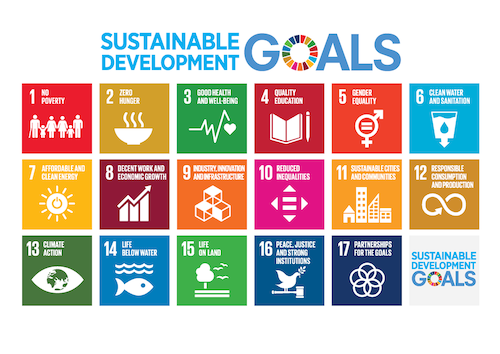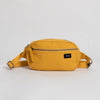Fashion consequences are larger and more severe than we know and understand. The accessibility and expansion of clothing production are necessitating additional resources to serve the demand— growing crops and rearing livestock to create fashion textiles. This puts a strain on the biodiversity elements including land, forest, and water resources. Further, the high-impact dyes and chemicals used in the manufacturing process pollute waterways, endangering not just the ecosystems but also human health. While the fashion sector is estimated to be a 3 trillion U.S. dollars industry, and expected to rise significantly more in a few years, poor wages, unfair labor practices, and massive waste production are still prominent features that haunt the behind-scenes of the fashion world.
Table of Contents
Eradicating poverty and other social injustices is possible only with global initiatives that promote education and healthcare, decrease inequality, strengthen the world economy, and combat climate change. The Sustainable Development Goals (SDGs) set by the United Nations is a chance for the world to fix what we cannot seem to stop breaking. Commenced and adopted by the UN Member States in 2015, the timeline for reaching the SDGs is till 2030, which leaves us roughly around 9 years to achieve them. In total, 17 goals constitute The 2030 Agenda for Sustainable Development— an imperative mission bestowed upon the government and citizens of both developed and developing countries (especially the fashion industry, whose environmental footprint exceeds that of France, Germany, and the United Kingdom combined).
Fortunately, fashion brands are well on their course to sustainability, allowing consumers to manifest their individualism while catalyzing alleviation of poverty. Sustainable fashion brands are working hard by taking educational initiatives to reconsider the status quo and improve society.
Many impoverished countries rely on apparel manufacturing to keep their economies afloat. As a result, businesses that pay their garment workers a livable wage and ensure safe working conditions aid in the elimination of poverty in low-income communities. By creating sustainably produced commodities, they are helping laborers and farmers break free from poverty loops. Now the question remains— could the clothing brands and manufacturers solely do the great right? Let’s go through the 17 SDGs in relation to fashion to find out if that is feasible.
- No Poverty
The fashion industry creates millions of employment every year, raising millions out of poverty. Yet it faces a significant difficulty in ensuring ethical employment and a fair wage in every step of the distribution chain.
- Zero Hunger
The fashion business consumes large amounts of resources that could otherwise be used for harvesting drinking water and food production. By creating new materials from trash and reusing and recycling existing materials, the industry can work on their sustainability progress.
- Good Health And Well-being
Implementing improved social health regulations and providing access to emergency funding for workers would help the fashion industry become more sustainable in the years ahead.
- Quality Education
The fashion sector can improve by implementing innovative and meaningful solutions— sustainability initiatives that train and educate workers to gain a better understanding of labor rights and fair wages.
- Equality Between Gender
It is not news that the vast majority of laborers in the apparel industry are women, and that they face discrimination due to unsafe working practices and inadequate social welfare programs. It suffices to say that the fashion business should work more on muting the sexual inequalities, and treat all genders equally.
- Clean Water And Safety
The textile industry consumes around 93 billion cubic meters of water in a year and utilizes the amount of what one person will drink over three years to produce a single piece of a cotton T-shirt. Then, there is the contamination of water caused by high-impact textile dyeing and finishings. This is one important department where the fashion industry has to strive harder to better manage their water utilization.
- Affordable And Clean Energy
The fashion sector has the potential to significantly reduce its CO2 emissions by using green energy (solar and wind).
- Decent Work And Economic Growth
The fashion industry must make effort to eradicate forced labor and child labor by promoting more ethical employment, safety nets, and workplace rights.
- Industry, Innovation, And Infrastructure
The fashion sector is characterized by a convoluted supply chain with numerous linkages— manufacturing processes account for 60% of the carbon emitted while supply chains are responsible for 20%. Effective solutions for reducing CO2 emissions in the fashion industry are critical.
- Reduced Inequalities
Two out of every five laborers in the garment business lose their jobs— it is agreeable that this has to change in the fashion industry.
- Sustainable Cities And Communities
Working conditions can no longer be a secondary issue in the fashion industry. Fatal accidents like the 2013 Rana Plaza Factory collapse have demonstrated the crucial importance of safe working conditions.
- Responsible Consumption And Production
It's critical to make sustainable fashion consumption easier for consumers by allowing them to rent, recycle, or resell circular fashion models.
- Climate Action
The fashion industry must take the lead in promoting climate justice— the impact of the fashion sector on the environment is 10% of global CO2 emissions.
- Life Below Water
The fashion industry contributes to the extinction of sea life by contaminating the water bodies with toxic chemicals, pesticides, microfibres, etc. However, the fashion industry is also repurposing aspects of the problem to create new, imaginative solutions like recycling sea plastic into clothing—ocean plastic fibre.
- Life On Land
The fashion industry is accountable for irresponsible, overproduction practices which have a serious and harmful impact on biodiversity. While the industry is working to change this, we, as consumers, must also contribute our share by avoiding mindless purchases.
- Peace, Justice, And Strong Institutions
The fashion industry must strive for a more equitable atmosphere, irrespective of gender, age, ethnicity, or physical impairments.
- Partnerships For The Goals
Fashion industry needs to redefine values and revive global partnerships for environmental sustainability.
How Is Terra Thread Being A Part Of Achieving The SDGs?
Terra Thread practices fair trade pay and a safe working environment, allowing the workforce to make exquisite sustainable essentials. We envision a world in which our customers know where and how the products are manufactured. Our ethically produced organic cotton bags are manufactured in Certified Fair Trade factories in India.
Carbon Neutral Products
Terra Thread seeks to lessen its CO2 emissions by committing to carbon sequestration initiatives— all of our products are carbon neutral as part of our mission to give back to the environment. We utilize the Green Story carbon offset tool to supply the most sustainable, carbon-neutral items.
GOTS and Fair Trade Certified
We appreciate the careful consideration given to the materials used and how the bags are made— our collection of sustainable bags and backpacks are made with 100% organic cotton, they are also GOTS and Fairtrade Certified. Fair Trade Standards ensure a safe, fair, and healthy working environment, and embolden the workers by facilitating their income prosperity. Generating all of our products through mindful and sustainable practices and a fair wage environment, from farmlands to finished products, Terra Thread’s organic cotton products deliver a touch of ethical luxury.
Impacting Lives— Feeding America
We are supporters of eco-friendly business conducts--- working hard and carefully to treat every employee with kindness, fair wages, and working conditions. Terra Thread also helps impact thousands of lives through our contribution to Feeding America’s initiative to put an end to hunger. Feeding America's network of 200 food banks, 60,000 food pantries are making a difference in the world by providing nourishing meals to the needy, and Terra Thread is elated to be part of it.
Breaking The Chains Of Environmental And Social Poverty
Terra Thread loves conscientious fabrics, craftsmanship, minimalist elegance, and customizable iconography, and so does our parent company, Gallant International Inc. Gallant Inc is certified B-Corp committed to doing what is best for the environment and humanity. As global consumers, we understand the importance of raising our voices and speaking up. Conscientious production ensures that the workers are paid fairly and employed in eco-friendly environments. We can create a change by supporting the brands that strive to be sustainable in more ways than one.





